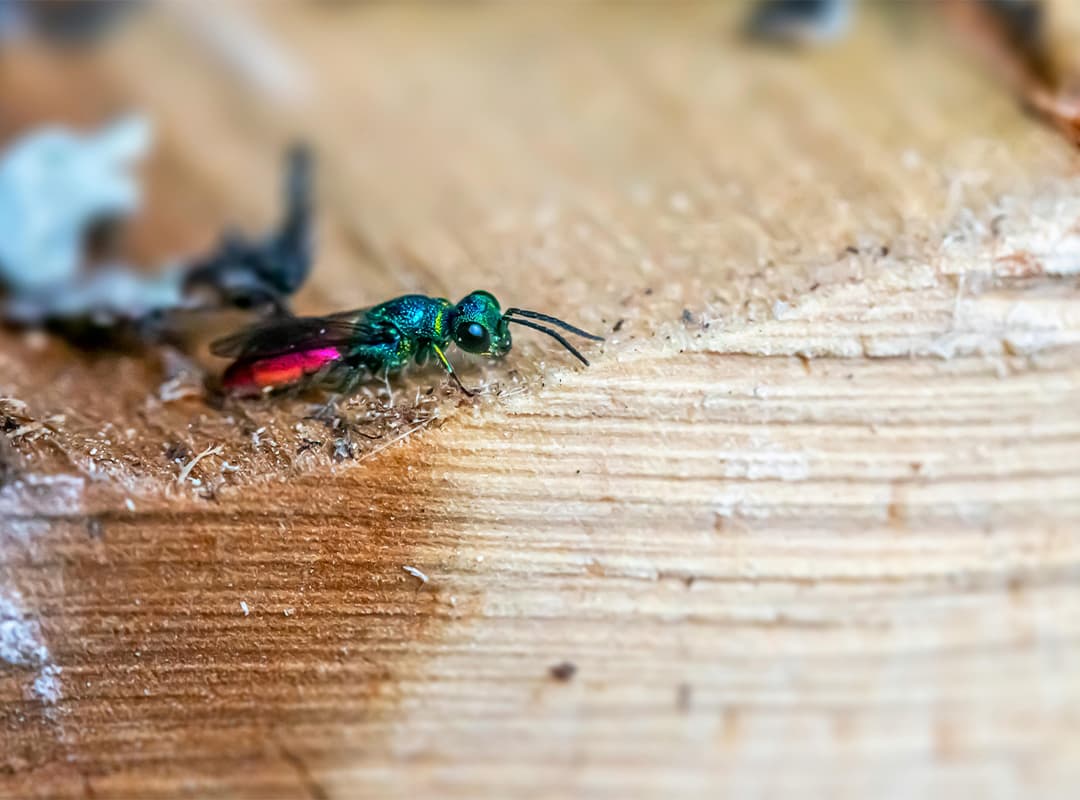The exact appearance of parasitoid wasps depends on the species. Most are extremely small (1 to 10 mm) and have brown or black bodies with long, thin antennae. However, some species belonging to the family Ichneumonidae can be over 10 cm (4 inches) long and have a very long ovipositor (egg-laying structure), while Trichogramma spp. are very small, 0.25-1 mm (1/25 in) long.
In some species, the pupae are the most commonly observed life stage and look like rice grains on the surface of the host insect. Gardeners are more likely to see the results of parasites, such as aphid mummies, than the wasps themselves.
The exact life history of parasitoid wasps depends on the species, but most tend to be specialists that attack a single host insect species. Together, parasitoid wasps attack aphids, scale insects, scale insects, stink bugs, beetles, and caterpillars in various life stages. The parasitized aphids usually turn brown or black and have a swollen balloon-like appearance. After completing its development, the adult wasp emerges and leaves a round exit hole in the back of the dead aphid, called an aphid mummy.
Female wasps usually parasitize their hosts by paralyzing the adult insect or larva and laying eggs inside. After hatching, the larvae feed inside (endoparasite) or outside (ectoparasite) the host. After pupation, an adult wasp emerges inside or outside the host. Wasps that pupate externally often spin conspicuous pupal cocoons after they emerge from the host. Adults typically feed on nectar, pollen, and honeydew, and in many cases, parasitoid wasps require floral resources for pollen and nectar to maximize their effectiveness.
Parasitoids as biological control agents
Several species of parasitoid wasps are commercially available for the biological control of certain pests in fruits, vegetables and ornamental plants. One species, Aphidius colemani, is designed to control aphids in greenhouses and outdoor growing systems. Various Trichogramma spp. are available for the control of scale insect pests, including corn borer, scoopers, cabbage looper, worms, borers and cuckoo beetles.
In addition to these commercially available parasitoid wasps, natural populations of other species can effectively suppress populations of certain insect pests. Trissolcus spp. are important parasitoids of the eggs of the brown marbled bug (Halyomorpha halys). The entire development of the wasp from egg to pupa takes place inside the parasitized bug egg, which darkens as the wasp develops. One species in particular, the samurai wasp (Trissolcus japonicas), has been observed to parasitize 90% of brown marbled bug eggs. Colpoclypeus florus is another species of parasitoid wasp that attacks the caterpillars of scale insects. In 1992, this species was observed to parasitize approximately 80% of the larvae of leafhoppers in untreated apple orchards in Washington. In some cases, more than 50 C. florus can be produced from a single host. Maintaining natural populations of parasitoid wasps is possible through good conservation practices.
